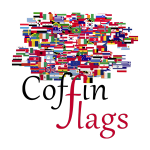Description
 Japan is an island country in East Asia. Located in the Pacific Ocean, it lies off the eastern coast of the Asian continent and stretches from the Sea of Okhotsk in the north to the East China Sea and the Philippine Sea in the south. The kanji that makes up Japan’s name means ‘sun origin’, and it is often called the “Land of the Rising Sun”. Japan is the world’s 4th largest island country and encompasses about 6,852 islands. The stratovolcanic archipelago has five main islands: Honshu, Hokkaido, Kyushu, Shikoku and Okinawa which make up about 97% per cent of Japan’s land area. The country is divided into 47 prefectures and unofficially into eight regions, with Hokkaido being the northernmost prefecture and Okinawa being the southernmost prefecture. Japan is the 2nd most populous island country. The population of approximately 126 million is the world’s eleventh largest, of which 98.5% are ethnic Japanese. 90.7% of people live in cities, while 9.3% live in the countryside. About 13.8 million people live in Tokyo, the capital of Japan. The Greater Tokyo Area is the most populous metropolitan area in the world with over 38 million people.
Japan is an island country in East Asia. Located in the Pacific Ocean, it lies off the eastern coast of the Asian continent and stretches from the Sea of Okhotsk in the north to the East China Sea and the Philippine Sea in the south. The kanji that makes up Japan’s name means ‘sun origin’, and it is often called the “Land of the Rising Sun”. Japan is the world’s 4th largest island country and encompasses about 6,852 islands. The stratovolcanic archipelago has five main islands: Honshu, Hokkaido, Kyushu, Shikoku and Okinawa which make up about 97% per cent of Japan’s land area. The country is divided into 47 prefectures and unofficially into eight regions, with Hokkaido being the northernmost prefecture and Okinawa being the southernmost prefecture. Japan is the 2nd most populous island country. The population of approximately 126 million is the world’s eleventh largest, of which 98.5% are ethnic Japanese. 90.7% of people live in cities, while 9.3% live in the countryside. About 13.8 million people live in Tokyo, the capital of Japan. The Greater Tokyo Area is the most populous metropolitan area in the world with over 38 million people.
The national flag of Japan is a rectangular white banner bearing a crimson-red disc at its centre. This flag is officially called Nisshōki (日章旗, the “sun-rise flag”), but is more commonly known in Japan as Hinomaru (日の丸, the “circle of the sun”). It embodies the country’s sobriquet: Land of the Rising Sun. The sun plays an important role in Japanese mythology and religion as the Emperor is said to be the direct descendant of the sun goddess Amaterasu and the legitimacy of the ruling house rested on this divine appointment and descent from the chief deity of the predominant Shinto religion. The name of the country as well as the design of the flag reflect the central importance of the sun.







